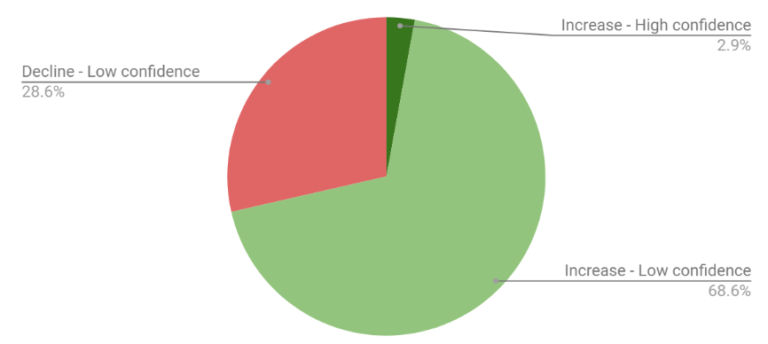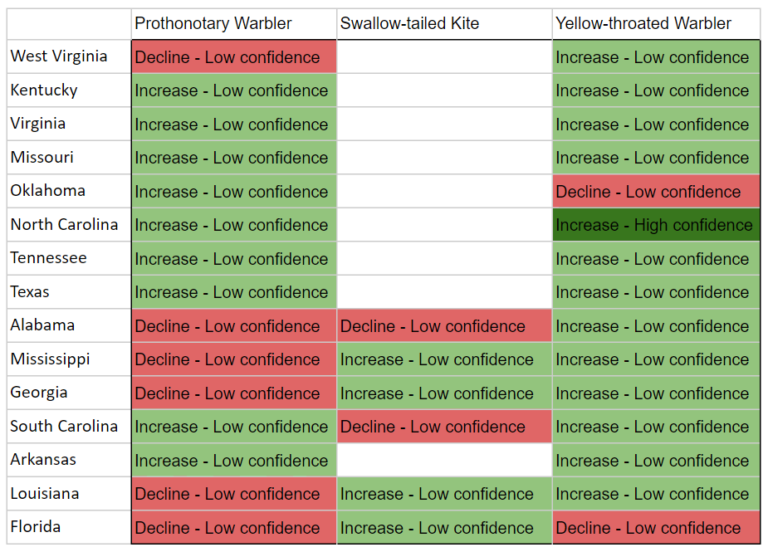Recent trends for forested wetland birds

This is a sneak peek at the draft report titled Recent Trends in Southeastern Ecosystems: Measuring progress toward the Southeast Conservation Adaptation Strategy (SECAS) Goal. Forested wetland birds is one of the 12 indicators covered in the report. There’s more background about the goal on the goal page of the SECAS website.
Forested wetland birds

Species trend data for each state used in the chart above

Overall trend
Most states showed increasing trends for forested wetland birds species from 2010-2015. Species selected are Regional Species of Greatest Conservation Need (RSGCNs) for states in the Southeast, primarily occur in this ecosystem, and have sufficient data for trend analysis in the Breeding Bird Survey. High confidence trends were statistically significant while low confidence trends were not. Averaging species trends across species and states results in an overall 2% increase per year.
On track to meet SECAS goal
Yes
Data source
Confidence in trend
Medium. The Breeding Bird Survey certainly has some issues, but it is a standardized and randomized sample regularly used to estimate bird population trends. The mixed patterns across states and the low number of statistically significant (“high confidence”) trends suggest that, overall, forested wetland birds may be stable, slightly increasing, or slightly decreasing, with variation across states.
Interpretation
This is an indicator of both local and landscape conditions across the forested wetland ecosystem. While there is variation across species and states, forested wetland birds appear to be on track to meet the SECAS goal. This may be due to the extensive conservation investments in forested wetlands, policies restricting wetland development, and growing interest from urban communities in water supply protection and reducing flood risks.